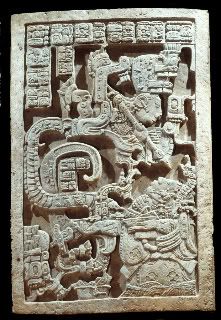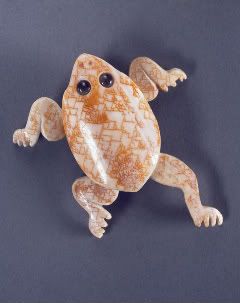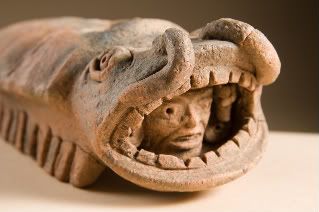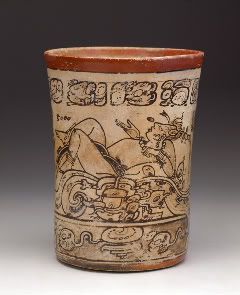A New Look at Ancient People
The most exotic destination you can visit this summer is in Massachusetts at the Peabody Essex Museum (PEM) in Salem. The featured exhibition, “Fiery Pool: The Maya and The Mythic Sea,” captures the excitement and essence of the ancient American civilization in a dramatic new way.
At its zenith, between 300 and 900 A.D., the Maya civilization comprised about 2,000,000 people in hundreds of cities across Mexico and Central America. They spoke several dialects of the same language. It was the only literate society in pre-Columbian America and scribes were such an important social class that some were chosen from among the younger sons of the royal families. The Mayans also had developed highly-advanced systems of mathematics, astronomy, architecture, and art as well as a complex religion.

LINTEL WITH A BLOODLETTING RITE; AD 723; Yaxchilan, Mexico, limestone
The “Fiery Pool” takes its name from the seas that surrounded the Mayans – the Gulf of Mexico, the Caribbean Sea, and the Pacific Ocean. To the ancients, the sun rising in the east and setting in the west gave the sea the appearance of being on fire. It was an important life force. Their gods battled on the sea. Monstrous creatures lived in the sea. Ancestors communicated through the sea. Food came from the sea. Trade took place on the sea.
Nevertheless, scholars did not fully appreciate the importance of the sea in Mayan culture until about twenty-five years ago, when they deciphered the pictograph for the sea in the 800-glyph writing system. There are likely to be more discoveries, too. Even today, only 90% of the glyphs have been deciphered.

CARVING OF A FROG; AD 700-800; Topoxte, Guatemala; shell and quartz.
With a new key to open the door on the Mayan civilization, archaeologists went back and re-examined and reinterpreted artifacts. Descendants of the pre-Columbian Mayans also contributed important insights into the culture’s myths and legends and helped to establish the significance of objects.
The PEM exhibition represents a monumental effort. At one time, 23 curators were working in the museum’s galleries to install their objects. They came from as far away as Guatemala and Great Britain. Moreover, many of the works that now look pristine are the result of expert restoration. When “Fiery Pool” leaves Salem on July 18, it is scheduled to travel to the Kimbell Art Museum in Fort Worth, Texas, and the St. Louis Art Museum.

LOBSTER EFFIGY; circa AD 1550; Lamanai, Belize, clay and paint
There are more than 90 artifacts in the exhibition, some excavated only months ago. These extraordinary objects are arranged by theme into four sections: Water and Cosmos, Creatures of the Fiery Pool, Navigating the Cosmos, and Birth to Rebirth.
The displays have the power of theater. Well-designed lighting highlights important objects, while shadows add to the sense of mystery and discovery. Moreover, the images are vibrant and graphic. In the Creatures of the Fiery Pool gallery, for example, there’s a spiny lobster effigy with shark teeth from around 1550 A.D. Archaeologists suggest that the head in its mouth may be the face of a Mayan deity. It may hint at a blood sacrifice.

DRINKING VESSEL WITH THE MAIZE GOLD BORN FROM THE WATERS OF THE UNDERWORLD; 650-750; Calakmul, Mexico, ceramic
A small jadeite carving of a deity in the Navigating the Cosmos gallery is among the rarest objects in the exhibition. Measuring less than five by six inches in size, it is a national treasure of Belize. The color of the sculpture was much prized by the Mayans who associated it with the sea. Several objects in the exhibition are rendered in blue-green or jade.
The Maize God was a favorite subject. The detailed drawing on a ceramic drinking cup from about 650-750 A.D. recounts the legend of the Maize God being born from the waters of the Underworld. And, a plate from Guatemala from about 700-800 A.D. depicts the Maize God dancing above water.
As would be expected in a water-centered worldview, artists incorporated many sea creatures in their work. Children will enjoy discovering the variety of animals. A small lidded bowl from about 300-400 A.D. incorporates a world-turtle on its lid. Another lidded bowl from around 500 A.D. incorporates a duck on its lid. Crocodiles were also popular. A figurine shows the Jaguar God of the Underworld riding a crocodile. There’s a sculpture of a pelican and a carving of a frog, too. A conch trumpet was used, perhaps, to summon an ancestor. Like the scribes, the artists took pride in their work and often signed their names.
Daniel Finamore, curator of maritime art and history at PEM, and Stephen D. Houston, professor of social science and archaeology at Brown University, organized the exhibition and wrote the illustrated catalog, which is available online at www.pemshop.com.
Photos courtesy of the Peabody Essex Museum.

